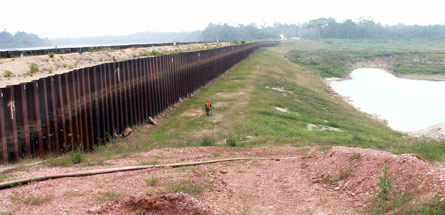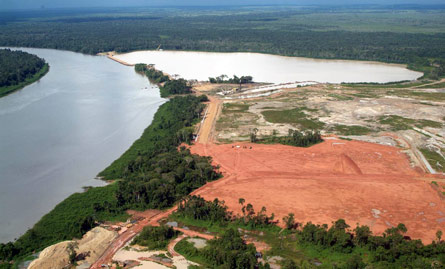Slope stability is a major concern if the only thing between your mine and the Suriname River is an embankment of sand, especially if critical reserves require blasting in close proximity to the embankment. To keep the ore flowing out of the mine, GeoSonics/Vibra-Tech was brought in to establish vibration criteria and develop blast design recommendations to minimize the impact on the sand embankment.



After completion of a Coffer Dam and sand buttressing of a natural levee, BHP Billiton’s mine management became concerned about the effects of blast vibrations on the new earthen structures designed to hold back the Suriname River. The mine plan called for the removal of critical reserves within several meters of the toe of the embankment. The expected vibration levels at this distance caused great concern about the potential failure of the slope. GeoSonics/Vibra-Tech conducted a Multiple Analysis of Suface Waves (MASW) survey to determine the shear wave velocity of the sand units in the embankment. In addition, GeoSonics/Vibra-Tech determined the natural frequency and amplification of the embankment. The measured shear wave velocity was utilized in a finite element model to determine the maximum shear stress that would be developed in the embankment as a result of different ground vibration amplitudes. From this analysis an appropriate vibration limit was established. A linear array of seismographs were deployed to determine the site specific equation of attenuation. This equation was utilized to determine proper charge weights for a given distance so as not to exceed the developed vibration criteria. Finally, single hole signature analysis was completed to determine the appropriate delay time configuration to minimize energy at the natural frequency of the embankment. Two permanent seismographs are in place in the embankment to monitor future production blasting as it advances toward the embankment.
